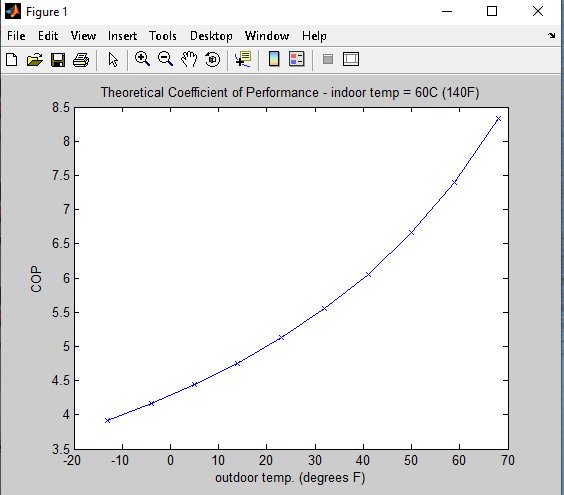Heating and home energy:
If you own a home, get an energy audit to show where you are losing heat, and the cost effectiveness of improvements;
Consider adding rooftop solar (Photo-voltaic), or join a community solar project.
This detailed heating/cooling guide is specific to Vermont:
A Vermonter’s Guide to Residential Clean Heating and Cooling
Consider an electric heat pump for space heating and water heating (incentives available!)
Heat pumps work best when it’s warmer outside. (by Ian Stokes)
We’re told that a heat pump looses its advantage at temperatures of 0F or below; there’s less information about how outside temperature influences the ‘Coefficient of Performance’ (COP), which is the ratio of heat energy output to electricity energy input.
The exact data on heat pumps’ efficiency are hard to find. Reported COP values of about 5 are typical. The loss of COP at single digit temps (degrees F) or below is often mentioned but not well explained. This qualified products list gives COP values about 2.0 for available units as at 5℉ air temperature.
Information about heat pumps in Vermont: Here and Guidelines for using a heat pump and its settings.
COP is reduced by a larger difference between indoor and outside temperature. The ‘laws’ of thermodynamics determine that the theoretical COP as a function of temperature difference is COPheat pump = Thot/(Thot-Tcold) (Temperatures in degrees Kelvin = Celsius+273) from https://learnmetrics.com/coefficient-of-performance/
Tcold would be the outdoor temperature (or a bit colder because the heat pump cools its condenser)
Thot would be the temperature of the heat exchanger in the home (probably it’s about 140F, not the actual room temperature of course).
So using the above relationship for theoretical COP I generated a graph of COP against outdoor temperature here:
 That’s the theoretical maximum, ‘real world’ values of COP would be less because of various inefficiencies and losses.
That’s the theoretical maximum, ‘real world’ values of COP would be less because of various inefficiencies and losses.
It’s clear from the above graph why ground-source (water) heat pumps work well, because of the almost constant 55 degrees F temperature of the heat source (ground water). But the ground water well is expensive.
The graph indicates that a heat pump is the best heating source when it’s relatively warm outside; fire up your wood stove when it gets cold.
